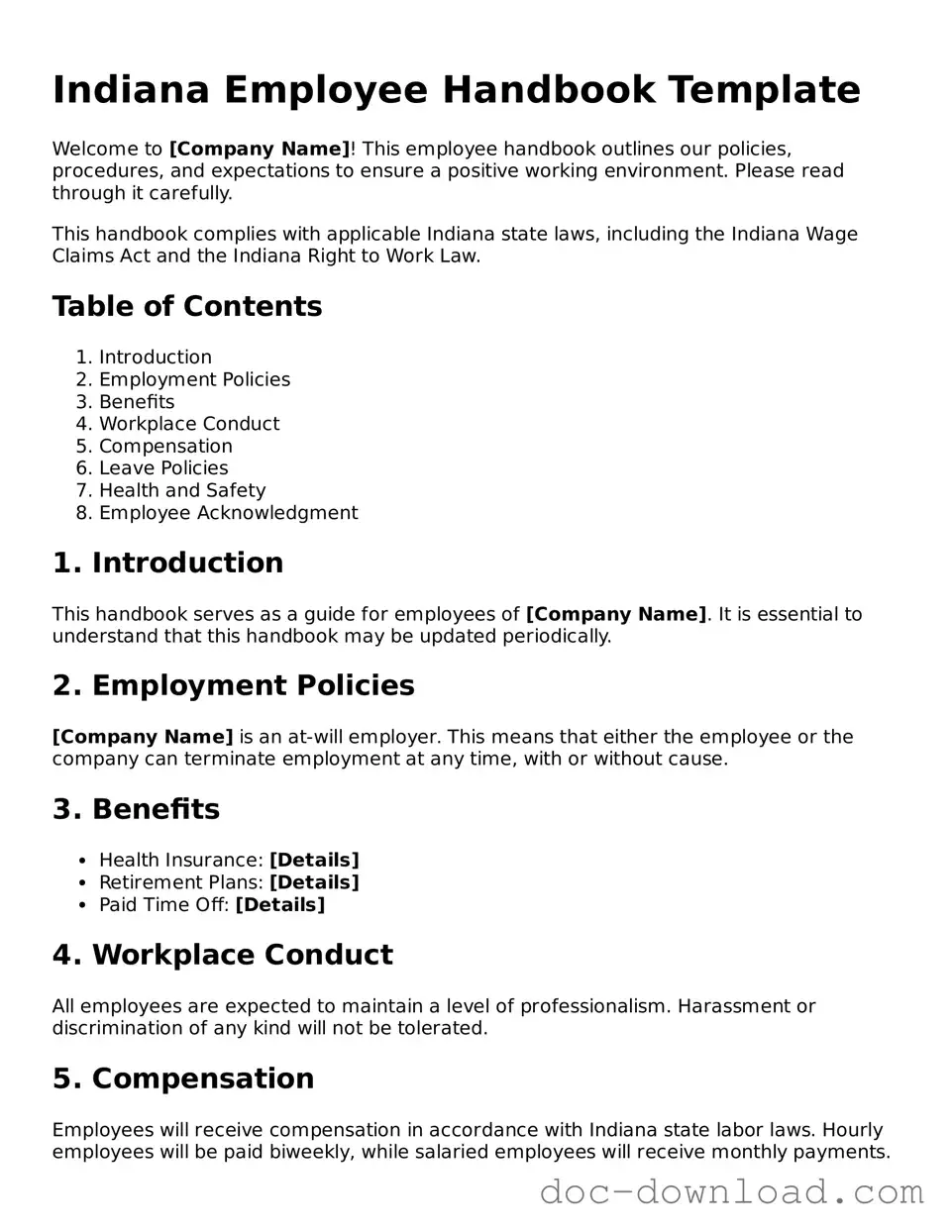Indiana Employee Handbook Template
Welcome to [Company Name]! This employee handbook outlines our policies, procedures, and expectations to ensure a positive working environment. Please read through it carefully.
This handbook complies with applicable Indiana state laws, including the Indiana Wage Claims Act and the Indiana Right to Work Law.
Table of Contents
- Introduction
- Employment Policies
- Benefits
- Workplace Conduct
- Compensation
- Leave Policies
- Health and Safety
- Employee Acknowledgment
1. Introduction
This handbook serves as a guide for employees of [Company Name]. It is essential to understand that this handbook may be updated periodically.
2. Employment Policies
[Company Name] is an at-will employer. This means that either the employee or the company can terminate employment at any time, with or without cause.
3. Benefits
- Health Insurance: [Details]
- Retirement Plans: [Details]
- Paid Time Off: [Details]
4. Workplace Conduct
All employees are expected to maintain a level of professionalism. Harassment or discrimination of any kind will not be tolerated.
5. Compensation
Employees will receive compensation in accordance with Indiana state labor laws. Hourly employees will be paid biweekly, while salaried employees will receive monthly payments.
6. Leave Policies
All employees are eligible for the following types of leave:
- Vacation Leave
- Sick Leave
- Parental Leave
7. Health and Safety
The health and safety of our employees are a top priority. Employees should report any unsafe conditions to their supervisor immediately.
8. Employee Acknowledgment
By signing below, you acknowledge that you have received a copy of the [Company Name] Employee Handbook and understand its contents.
Employee Name: _______________________
Date: _______________________
Thank you for being part of [Company Name].
